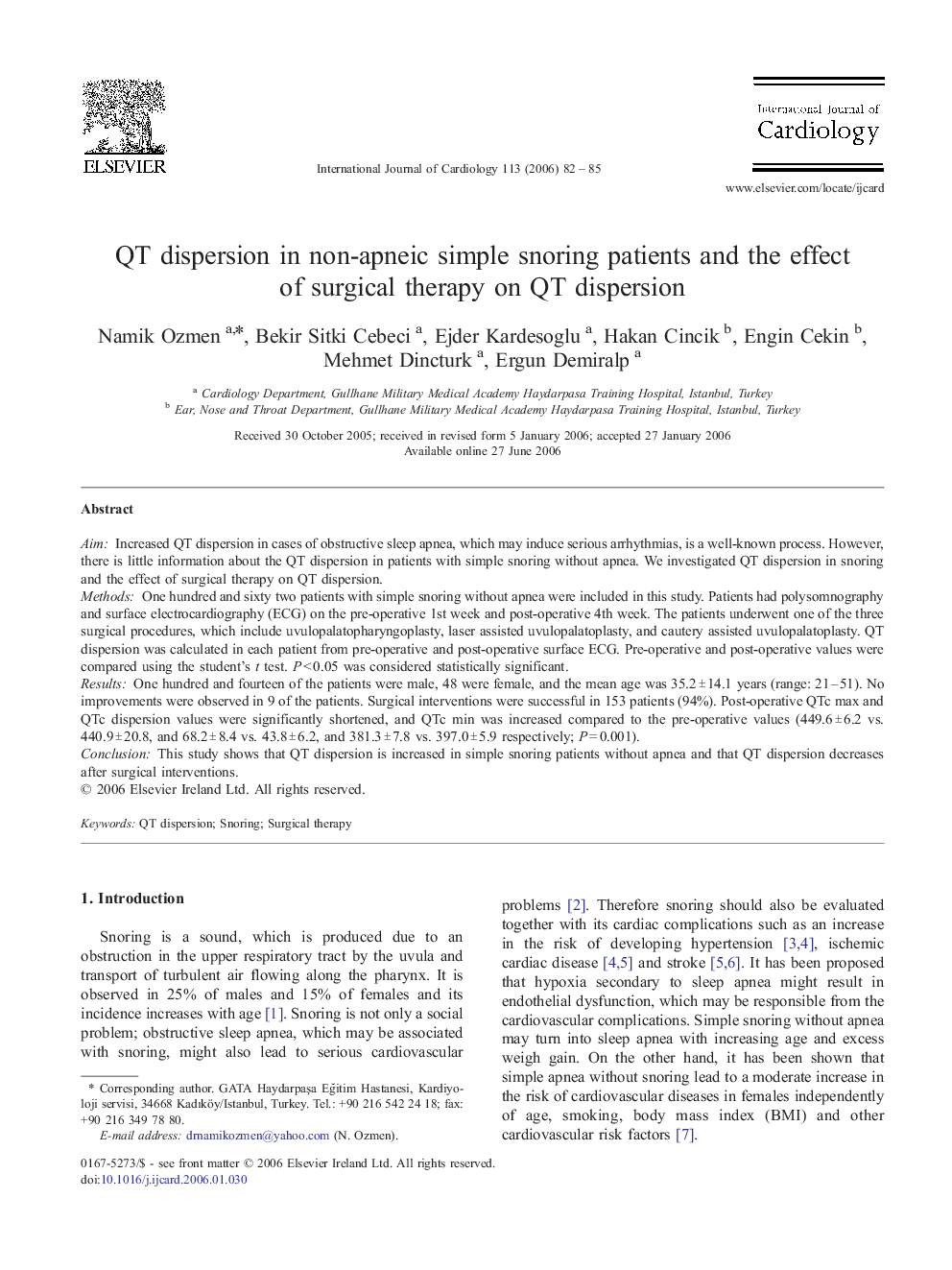| Article ID | Journal | Published Year | Pages | File Type |
|---|---|---|---|---|
| 2936201 | International Journal of Cardiology | 2006 | 4 Pages |
Aim:Increased QT dispersion in cases of obstructive sleep apnea, which may induce serious arrhythmias, is a well-known process. However, there is little information about the QT dispersion in patients with simple snoring without apnea. We investigated QT dispersion in snoring and the effect of surgical therapy on QT dispersion.Methods:One hundred and sixty two patients with simple snoring without apnea were included in this study. Patients had polysomnography and surface electrocardiography (ECG) on the pre-operative 1st week and post-operative 4th week. The patients underwent one of the three surgical procedures, which include uvulopalatopharyngoplasty, laser assisted uvulopalatoplasty, and cautery assisted uvulopalatoplasty. QT dispersion was calculated in each patient from pre-operative and post-operative surface ECG. Pre-operative and post-operative values were compared using the student’s t test. P < 0.05 was considered statistically significant.Results:One hundred and fourteen of the patients were male, 48 were female, and the mean age was 35.2 ± 14.1 years (range: 21–51). No improvements were observed in 9 of the patients. Surgical interventions were successful in 153 patients (94%). Post-operative QTc max and QTc dispersion values were significantly shortened, and QTc min was increased compared to the pre-operative values (449.6 ± 6.2 vs. 440.9 ± 20.8, and 68.2 ± 8.4 vs. 43.8 ± 6.2, and 381.3 ± 7.8 vs. 397.0 ± 5.9 respectively; P = 0.001).Conclusion:This study shows that QT dispersion is increased in simple snoring patients without apnea and that QT dispersion decreases after surgical interventions.
